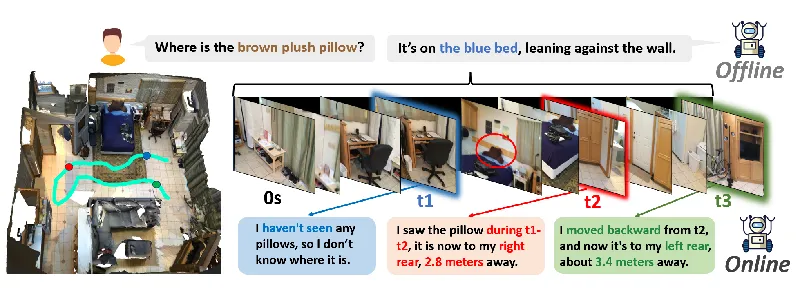Unlocking a New Era of AI Understanding: The Game-Changing OST-Bench for Spatio-Temporal Reasoning

A groundbreaking research paper has introduced OST-Bench, a revolutionary benchmark designed to evaluate the capabilities of multimodal large language models (MLLMs) in online spatio-temporal scene understanding. This benchmark seeks to elevate the AI's perception and reasoning skills, allowing it to interpret dynamic interactions within a real-world environment—a realm where existing models have often struggled.
What is OST-Bench?
OST-Bench differs significantly from traditional benchmarks that utilize pre-recorded data. Instead, it simulates an embodied agent in a dynamic setting, observing and interpreting a scene as it explores. The term "online" highlights the model's ability to process information incrementally, while "spatio-temporal" emphasizes the integration of current observations with past memories. This approach mirrors how humans interact with their surroundings, crafting a more realistic evaluation of AI capabilities.
The Challenge of Spatio-Temporal Reasoning
The creators of OST-Bench identified that leading MLLMs underperformed when tasked with complex spatio-temporal reasoning. For instance, in scenarios that demanded the model to recall past visual inputs and connect them to present situations, accuracy dropped significantly. This decline was particularly evident when the tasks required tracking object locations over time or deciphering relationships between multiple objects, demonstrating a crucial gap in AI reasoning abilities.
An intriguing phenomenon noted in the research is the "Spatio-temporal Reasoning Shortcut," where models tended to make shallow inferences instead of accessing detailed memory. This behavior inhibits the model's ability to perform effective reasoning based on a complete understanding of its surroundings.
The Data Behind OST-Bench
OST-Bench comprises a robust dataset built from three real-world sources—ScanNet, Matterport3D, and ARKitScenes—together providing over 1,400 scenes and 10,000 question-answer pairs. This diversity enables comprehensive testing of MLLMs under varied circumstances, ensuring that the benchmark challenges models in various aspects of spatio-temporal reasoning.
Experimental Findings and Future Directions
The researchers rigorously evaluated several MLLMs using the OST-Bench, finding that even the most cutting-edge models lagged significantly behind human performance, with a discrepancy of over 30% in accuracy on relevant tasks. These findings indicate an urgent need for further research and improvements in AI models to better handle real-world dynamic environments.
OST-Bench has been made publicly available, with hopes that it will accelerate advancements in spatio-temporal reasoning and embodied understanding in AI. The benchmark establishes a platform for future model development, promoting enhanced online perception and reasoning abilities, which are vital for applications ranging from autonomous navigation to assistive robotics.
Conclusion
As AI continues to evolve, tools like OST-Bench are essential for pushing the boundaries of what AI can achieve. By focusing on online spatio-temporal understanding, researchers aim to mirror human-like perception in machines, fostering a new era of intelligent systems that can navigate and reason in the complex dynamics of the real world.